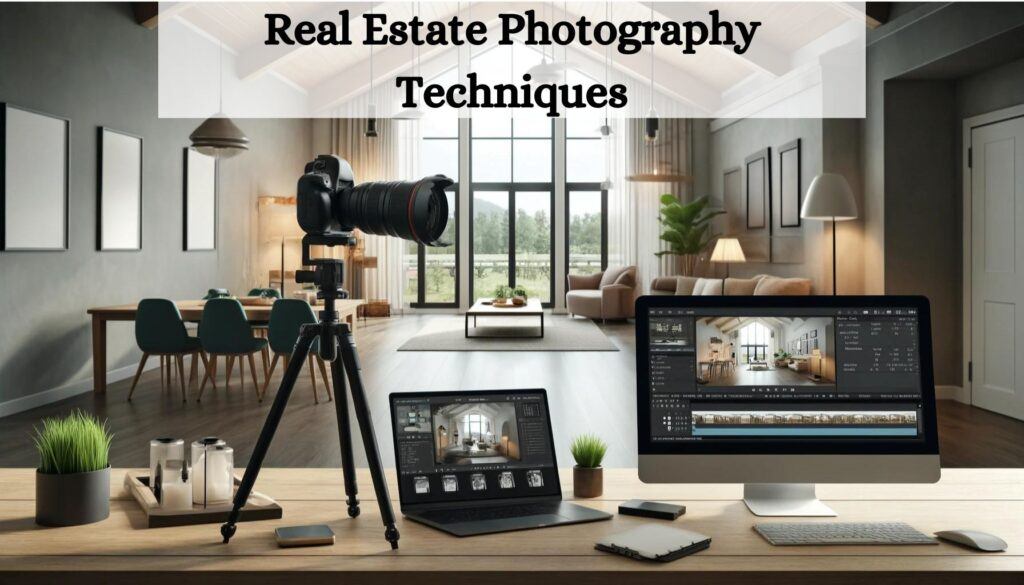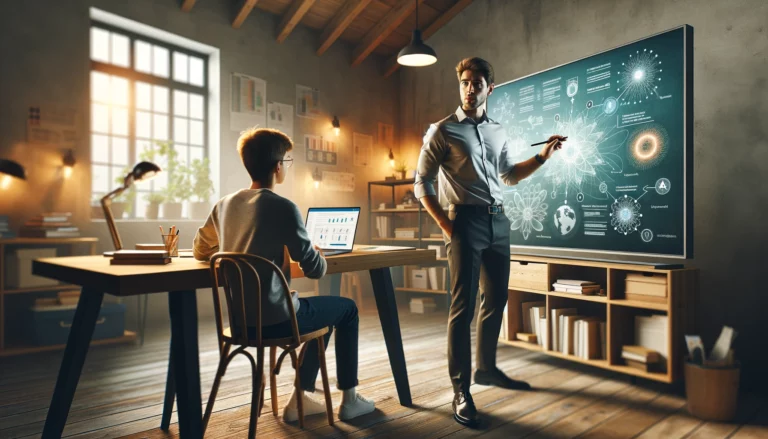You’re about to discover why having the right gear is pivotal in real estate photography. It’s not just about snapping pictures; it’s about portraying a space in its best light, literally and figuratively.

Article Overview
Let’s start with wide-angle lenses. They’re your go-to tool for making rooms look spacious and welcoming. A focal length around 16-35mm on a full-frame camera captures more of the room and provides context, which is crucial for potential buyers who want to get a feel for the space.
Now, imagine you’ve lined up the perfect shot, only to find the photo blurry upon review. That’s where tripods and remote triggers come in handy.
They’re the unsung heroes ensuring stability and shake-free clarity. When taking long exposure shots to capture a room’s ambiance, these tools are indispensable for producing crisp, sharp images.
Lighting can make or break a photo, so good lighting gear is non-negotiable. Working with light stands and flash units gives you control to cast light evenly and avoid unflattering shadows.
Whether you’re bouncing light off a ceiling or diffusing flash, your goal is to emulate the soft, natural light that makes an interior look its most inviting. Master these equipment fundamentals, and you’re on your way to transforming ordinary spaces into photogenic places that catch the eye.
With the basics of equipment down, the next natural step is to dive into how you can use lighting techniques to elevate your photos even further. Enter section two, where we’ll explore how the interplay of shadow and light can bring real estate photography from good to great.
Illuminating Spaces: Advanced Lighting Techniques
When it comes to real estate photography, lighting can make or break your images. A well-lit space feels warm, inviting, and can dramatically enhance the look and feel of the property.
That’s going to include a mix of natural and artificial lighting sources to capture the best possible version of each space.
Let me walk you through the magic of using natural light effectively. The goal here is to maximize daylight to create a soft, even glow throughout the room.
Choose the right time of day when the sun fills the space with indirect light, avoiding harsh shadows. Don’t forget to open all curtains and blinds; it’s a simple step, but it makes a world of difference in accentuating the room’s natural charm.
Now, let’s tackle High Dynamic Range, or HDR for short. This isn’t just about taking a single photo; it’s about combining multiple exposures of the same scene to craft an image with perfectly balanced lighting.
HDR is a photographer’s best friend when dealing with challenging light conditions, such as bright windows against a darker room. When done correctly, HDR can reveal the cozy atmosphere of a living room or the sleek finishes in a modern kitchen.
Despite the benefits of natural light, sometimes it’s not enough. That’s where artificial lighting comes into play. Use flash units strategically to brighten up darker areas or to highlight key features like elegant countertops or custom cabinetry.
Continuous light sources can also be adjusted to fill the room with a homely brightness, providing a sense of depth and detail that potential buyers will find irresistible.
Moving on, you’re going to find out about the importance of composition in the next section. This will tie in closely with lighting techniques, as the way you compose your shots will influence how the light accents the best features of a property.
Composing the Perfect Shot in Real Estate
When it comes to real estate photography, how you compose your shot can make a striking difference. A well-composed photograph does more than just document a space; it tells a story and invokes a sense of place. I’m going to break down some non-negotiables in composition that you can’t afford to overlook.
You’re going to find out about the significance of keeping vertical lines straight in your photos. Verticals that are askew can seriously distort a viewer’s perception of a space, making it feel off-balance or sloped.
Use tilt-shift lenses when you can or apply perspective correction in post-production software like Adobe Lightroom or Photoshop. This isn’t just about keeping lines straight; it’s about preserving the integrity of the architecture in your images.
Camera height plays a pivotal role in how proportionate and inviting a room appears. The consensus among most real estate photographers is that shooting at chest height or slightly lower often yields the best results.
However, don’t worry too much about sticking to a strict height rule. Choose something that resonates with the specific features of the room you’re capturing.
And what about those standout elements that sell a property? Your composition should always aim to highlight the room’s key features.
These could be expansive windows that offer majestic views, unique architectural design, or even state-of-the-art amenities. The objective is to give potential buyers a glimpse of the lifestyle that awaits them.
Now, smoothly transitioning into section 4, we’ll discuss how embracing a variety of shooting techniques—including bracketing and exploring various angles—can further capture the essence and allure of a property.
By mastering these shooting strategies, not only will your compositions sparkle, but they’ll also tell the enticing stories that buyers yearn to see.
Professional Shooting Strategies for Property Showcasing
When it comes to real estate photography, capturing just any image won’t cut it. It’s crucial to deploy specific shooting techniques that highlight a property’s appeal in a way that potential buyers can envision themselves living there. I’m going to share a couple of tactics that make a world of difference.
First up, bracketing. This is a game-changer for dealing with high contrast scenes. By taking multiple shots at different exposures, you can blend these images during post-processing. The outcome?
A photograph that showcases the interior details without overexposing windows or underexposing corners. Just don’t worry too much about getting it perfect on the first shot; that’s what editing is for.
Moving on, variety is the spice of real estate photography. You can always adjust your approach down the road, but start by taking a variety of angles and positions.
This means corner shots, straight-on shots, and even those quirky angles that reveal the room’s functionality. After all, you’re not just selling a space; you’re illustrating a lifestyle.
Don’t forget, each photograph should convey not just the aesthetics, but also the flow of the property. This is critical in helping viewers imagine the property as their own. Remember, you’re not just taking pictures, you’re storytelling with your camera.
In the next section, we’re going to tackle post-processing. This is where your images get their finishing touches, like adjusting white balance, correcting distortions, and enhancing colors.
All of these steps are essential for that polished, professional look that can set a listing apart. Choose editing software that resonates with you and brings out the best in your shots.
Post-Production Excellence: Perfecting Real Estate Images
Once you’ve captured your suite of real estate images, it’s time to bring them into the digital darkroom for finetuning.
This isn’t just about making the photos look ‘pretty’ – it’s a crucial step in ensuring they serve their purpose: selling real estate. In my opinion, post-production is where good photos are transformed into great ones that really stand out in the market.
Professional photo editing tools are your best friends in this phase. Whether you choose Photoshop, Lightroom, or another top-tier editing software, your goal is to correct lens distortions, tweak lighting, and ensure colors pop – but not too much.
Adjust the white balance to keep the shots looking natural, and nail down the lighting and color corrections to showcase each property in its best light.
Consistency is key in real estate photography. From the first image to the last, make sure there’s a uniform look and feel.
This means maintaining consistent lighting, color temperatures, and style throughout your portfolio.
It conveys a professional touch and helps potential buyers navigate through the images seamlessly, imagining themselves in the space.
Remember, your first attempt doesn’t need to be your last. If the images aren’t quite there yet, don’t worry too much about it. Post-processing is an art in itself, and you can always adjust your approach down the road as you refine your skills.
Final Thoughts
Finally, choose editing techniques that resonate with you and your brand. You’re curating a visual story that could be the deciding factor in a sale, so make it count.
My parting advice? Take your time, pay attention to detail, and let your images shine. Your efforts will not only elevate the value of your website but also position it as an industry authority






